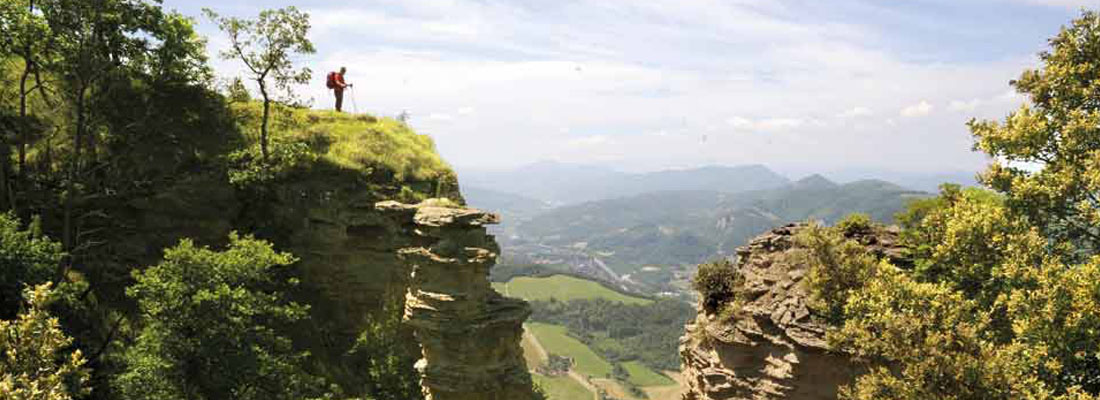Escursioni e trekking
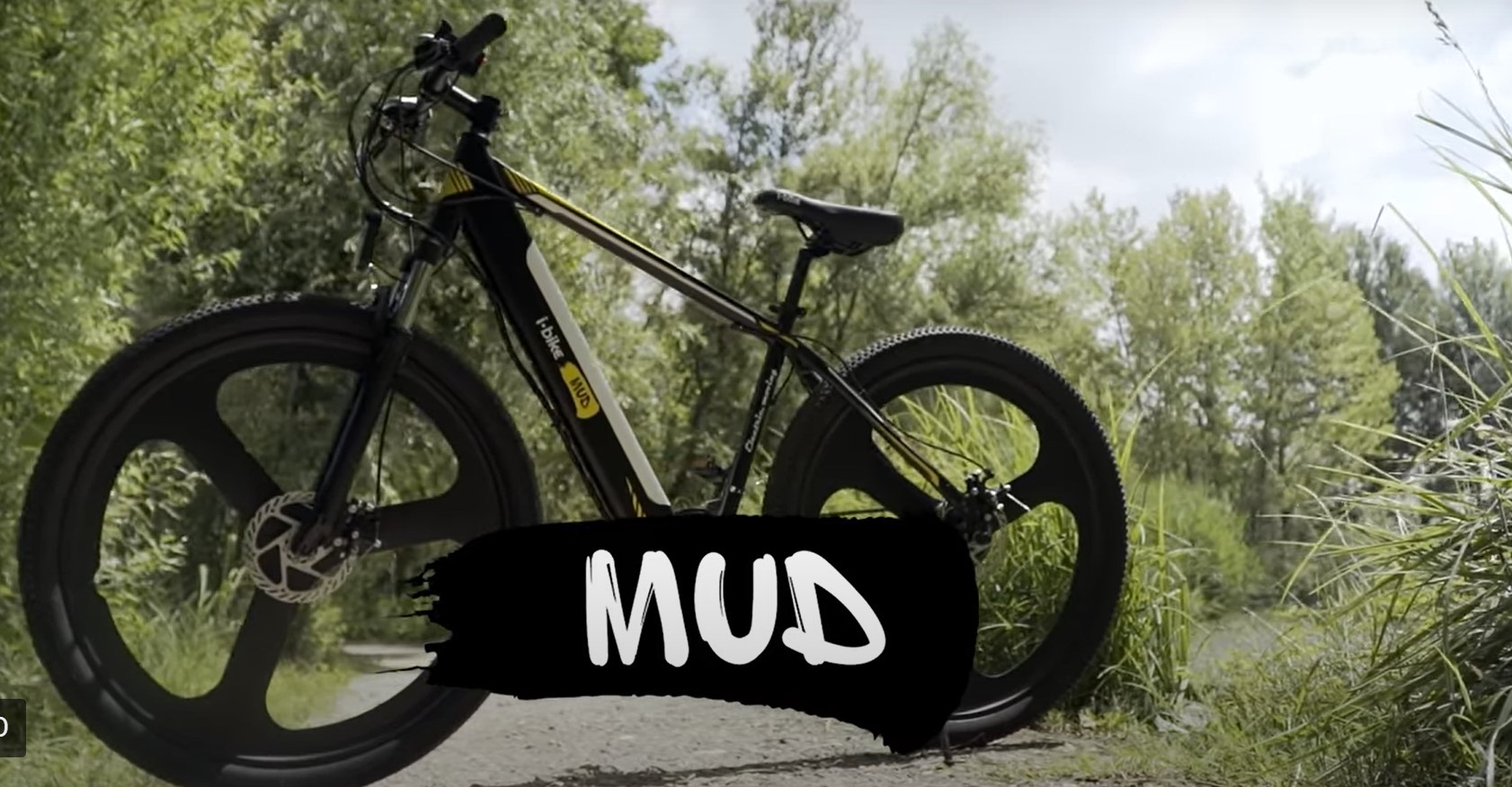 In the surroundings of Lodole Country House, in addition to the Via degli Dei, there are beautiful paths and routes, with extraordinary views. To give guests the opportunity to follow these itineraries, Lodole Country House offers the possibility to book and rent electric bikes directly at the property.
In the surroundings of Lodole Country House, in addition to the Via degli Dei, there are beautiful paths and routes, with extraordinary views. To give guests the opportunity to follow these itineraries, Lodole Country House offers the possibility to book and rent electric bikes directly at the property.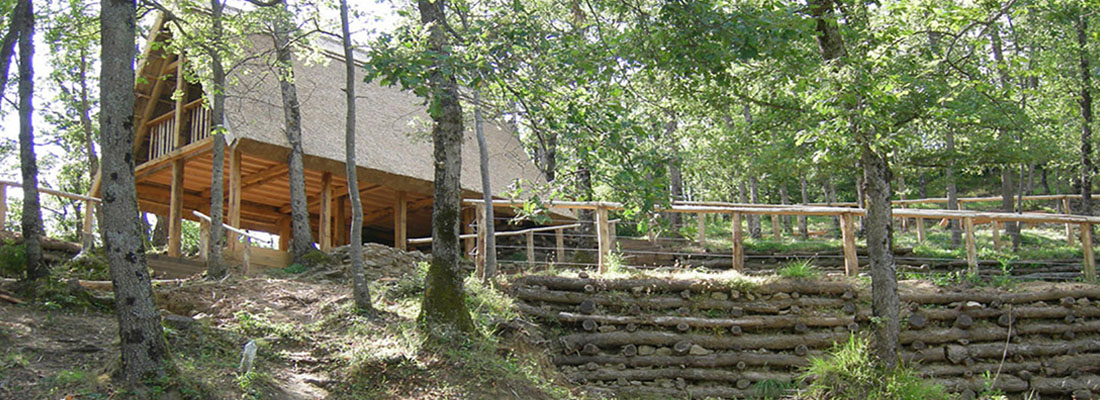
Monte Bibele sits between the two catchment basins of the Idice and the Zena and it was an
Etruscan and subsequently Etruscan-Celtic settlement. The research which has been carried out
up to now has revealed that there was a sizable village formed of numerous stone dwellings on
the eastern side of the mountain. How to get there: From Lodole Country House, by car, drive to
Loiano and take the SP22 road towards Monterenzio. Follow the road as far as Quinzano and then
turn left and follow the signs for the “Area archaeological di Monte Bibele”; after 2.5 km you will
reach the entrance and parking area. Continue on foot from here. We also recommend a visit to
the “Luigi Fantini” archaeological museum in Monterenzio. The museum hosts most of the finds
from the Monte Bibele archaeological area (the rest can be found at the Bologna archaeological museum).
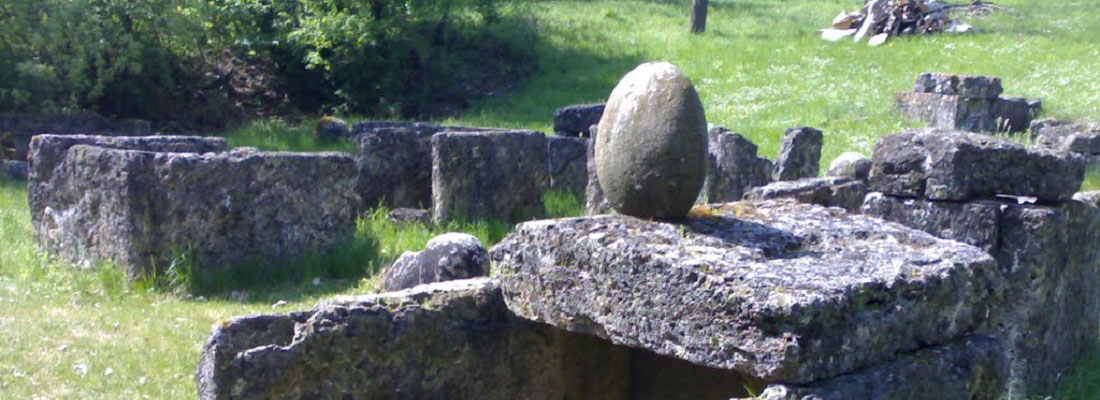
The Archaeological Area of Misa is located in the Apennines Bolognese in the town of Marzabotto,
along the SS46 Porrettana linking the archaeological area to the nearby Bologna. It is an Etruscan
city with an urban orthogonal shape along the Reno river valley and is considered a colonial
structure of the ancient city of Felsina. Most of the artifacts found are collected in the National
Archaeological Museum “Pompeo Aria” built next to the Misa archaeological area.
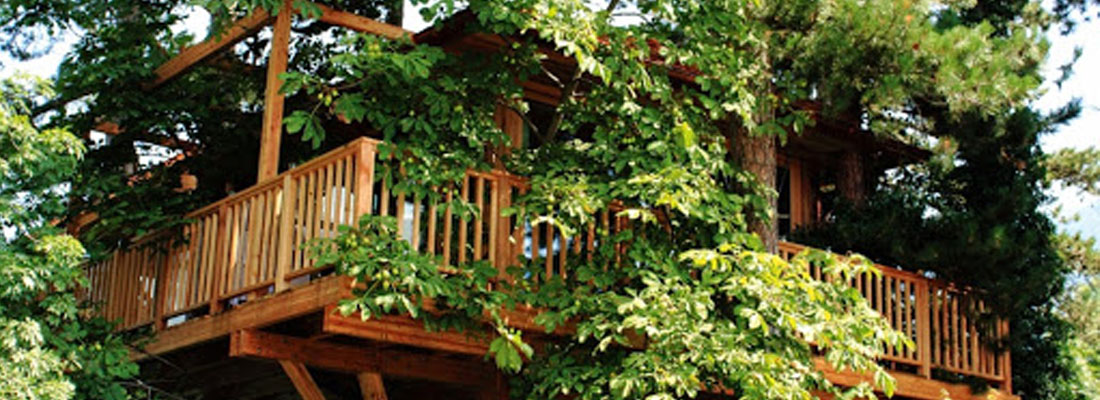
Who has never dreamt of spending at least one night in a tree house?
This idea arouses childrens imagination, stimulates romanticism in adults, satisfies everyone’s
desire to go back to nature , the tree house is the ideal solution for those in search of unique
emotions, amazing holidays. The tree house adds an exclusive touch to our offer for a stay at
Lodole Country House making it a unique structure in the whole of the the Tosco-Emiliano
Appenine situated between Bologna and Florence. The bed and breakfast tree houses are already
up and running in many Northern European countries, but they are few and far between in Italy.
Ours is therefore a really original proposal in Emilia Romagna. We combine elegance with comfort
and the amazing experience of living in close contact with nature. The great oak is there, the
uncontaminated spaces are there, the dream gets bigger and bigger…….who knows!
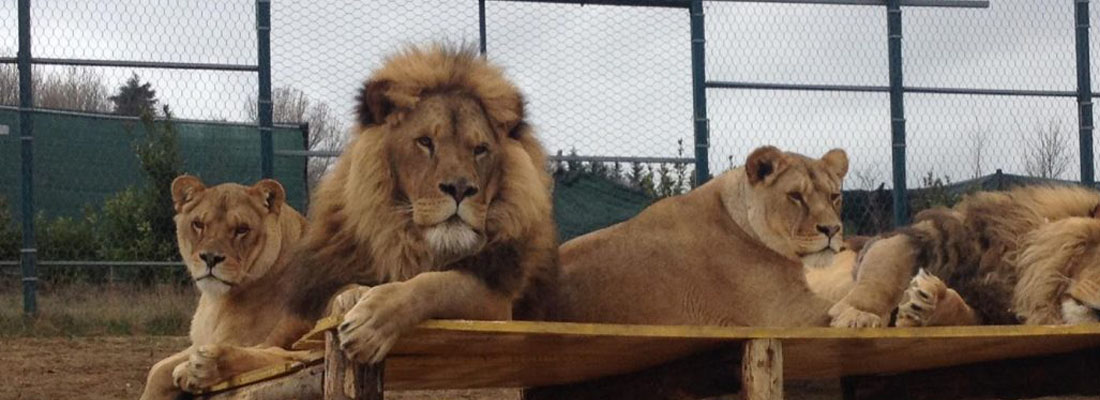
Monte Adone is one of the peaks that distinguishes the Bolognese stretch of the Apennines in the
splendid Contrafforte Pliocenico nature reserve, and in addition to its outstanding natural beauty,
it is also home to a special animal shelter that is the only one of its kind in Italy. The “Centro Tutela
Fauna Esotica e Selvatica di Monte Adone” (Monte Adone Exotic Fauna and Wildlife Shelter) offers
medical aid and protection to various species of native and exotic animals that are brought here
so they can be cared for in a safe and well-protected environment. The Centre is not a zoo, but a
non-profit-making shelter that helps and heals animals who are wounded or in difficulty. The
Centre is run by a group of volunteers who offer their services out of pure love for these animals,
and from May to September the shelter holds informative guided tours focused on the various
species it cares for.
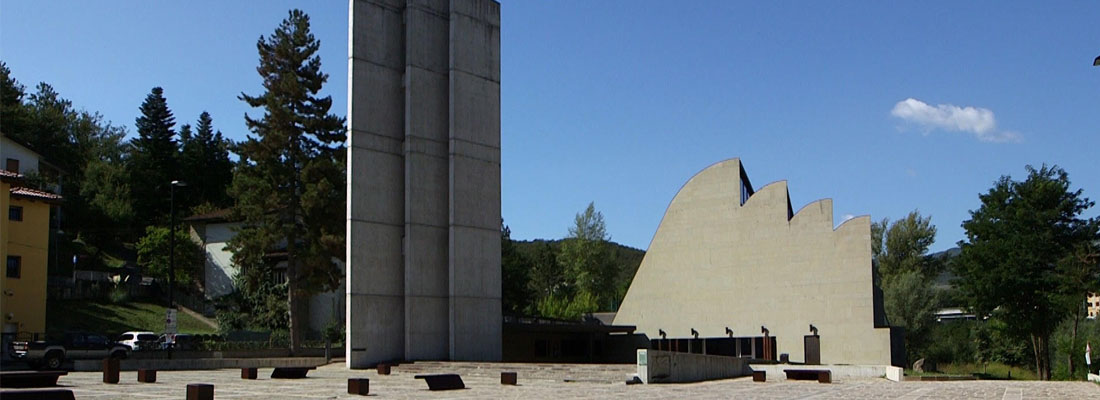
The church of Santa Maria Assunta in Riola is located in Vergato Bologna Apennines and was built
between 1977-78 but finished only in 1994. The church was designed by architect Alvar Aalto who
designed the structure and all the interior furnishings. In 1955 Cardinal Lercaro gave the charge office
New Churches to equip places of worship the outskirts of the city that was expanding as a result of
urbanization. However, the flattening of architectural churches, anonymous and repetitive,
commissioned the three major architects of the time to design a church. These were: France’s Le
Corbusier, Aalto and Tange Japanese. Each of them accepted the invitation and made a plan. Aalto was
the only one to be realized in practice. The study of light was one of the main cornerstones of the
architect’s work. The light inside the church is widespread, snatched by large windows oriented to the
north so that the end result is plentiful but never direct. Also for night illumination sources have been
included in order to give a soft light, very impressive. The shape of a “reversed binoculars church” This
means that all prospective lines are ideally converge in the center of the cross, including the
bell tower.
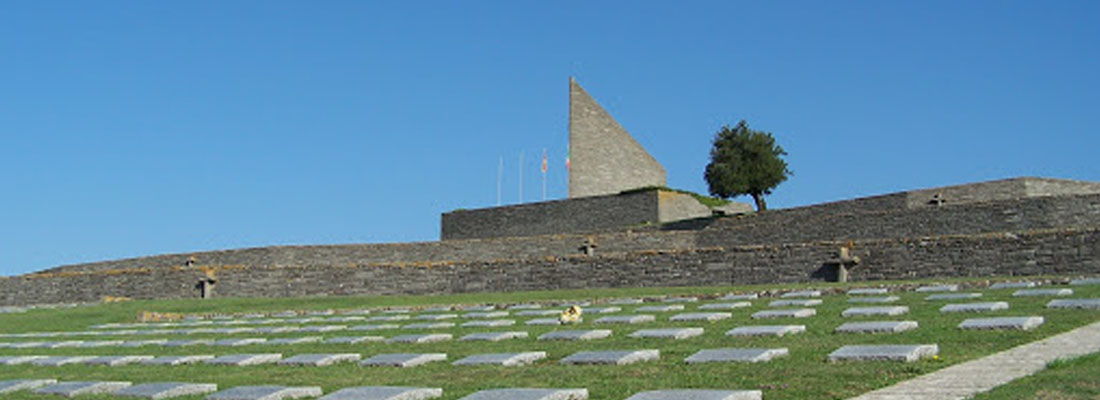
The Futa German Military Cemetery is located near the Futa Pass, on a characteristic mountain
peak at an altitude of 950 MASL, halfway between Bologna and Florence. During the Second World
War, this spectacular Tusco-Emilian mountainscape was part of the Gothic Line, the German
defensive front that sought to slow down the Allied military advance. Built in the 1960s by the
German architect, Dieter Osterlen, following agreements between Italy and the Federal German
Republic, the Futa German Military Cemetery is the largest burial ground built in Italy for the
German troops who died here during the war. The cemetery covers 12 hectares of ground and
consists of a series of stepped terraces that follow the slope of the mountain. The tombs are
protected by a 2 km long perimeter wall that spirals up to the peak of the mountain, culminating in
a pointed wedge-shaped memorial under which are two commemorative crypts.
This high, knifeedged feature pointing up into the sky makes the Futa German Military Cemetery a distinctive
landmark that can be seen from many miles around.
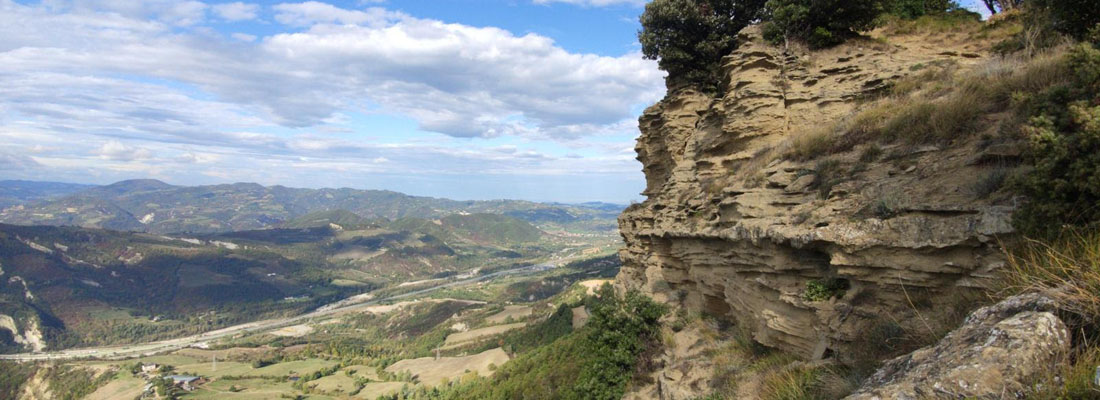
The Pliocenico Contrafforte is a large area formed by sandstone rocks that stretches between the
valleys of the Mountain Community Five Valleys Bolognesi in Monzuno and Sasso Marconi. The
geology of this area comes from the sediments transported by the rivers of these valleys that were
going to come together in a large maritime area in which the Pliocene characterized much of the
Bolognese Apennines area. The rocks of the current surveys that have formed as a result of the
lifting of the Apennine Mountains are rich in fossils and that refer to the presence of the sea in all
this territory. The most striking are the heights of the Buttress of Mounte delle Formiche, Monte
Adone and Monte Mario. Within this area of Community interest was established in 2006, the
Natural Pliocenico Contrafforte, a protected natural area of the Emilia Romagna region reserve
that distinguishes the province south of Bologna for its particular shape and variety of wildlife and
the environment. The natural beauty of this landscape can best be discovered along the famous
Via degli Dei, a hiking path marked by C.A.I. that can be done on foot or by mountain bike and
running through the Tuscan-Emilian Apennines from Bologna to Florence.
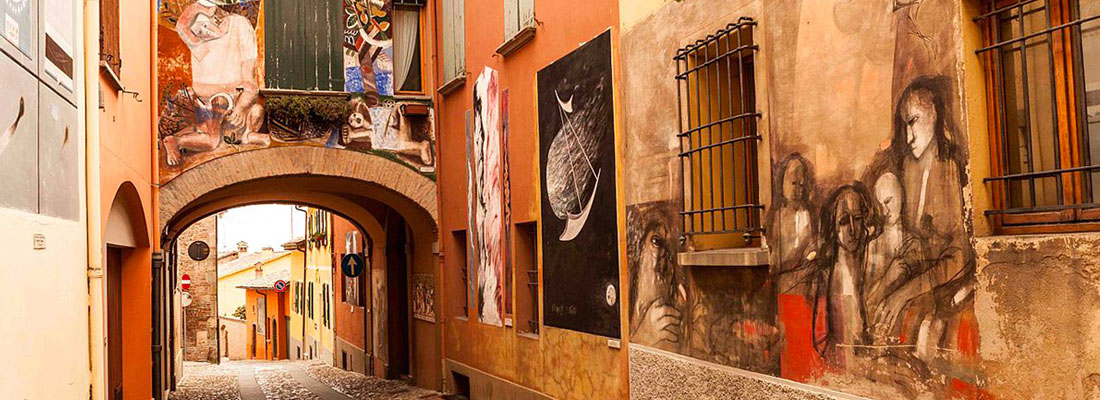
Rightfully regarded as one of the most picturesque medieval hamlets in the Tusco-Emilian
Apennines, the town of Dozza nestles comfortably in the hills, just north-west of Imola. Its
beautifully preserved buildings and splendid backdrop of rolling hills and vineyards,
crowned by a majestic Sforza castle, all combine to make the town well worth a visit,
especially as the official Enoteca Regionale dell’Emilia-Romagna is housed in the cellars of
the fortress. Founded in 1970 and granted official status by the regional authorities 8 years
later, this wine association brings together over 200 producers of fine wines, spirits and
balsamic vinegar. The activities of the Enoteca basically aim in two directions: – to offer a
firsthand experience of wines in a store-cum-museum opened in 2006 in the Sforza castle
vaults (where over 1000 different regional wines are on display) and to popularise wine
generally; – to promote local wines in Italy and abroad by providing coordination, support
and attendance at trade fairs, such as Vinitaly. Dozza also stands out for the numerous
murals that decorate the facades of the houses and enhance the village’s unique
character. Since 1989 Dozza has organised a special Mural Biennial Festival that has
become the village’s main event. Every two years, acclaimed national and international
artists come here to paint permanent works on the walls of this small town, thereby
helping to create its distinctive, artistic character. Dozza is just 3 Km from the Via Emilia
between Bologna and Imola (25 km from Bologna and 6 km from Imola). Dozza can be
easily reached from Lodole Country House by taking the A1 (Firenze – Bologna) motorway
at Sasso Marconi, changing to the A14 (Bologna – Ancona) motorway, exiting at Castel San
Pietro Terme and then continuing along the Via Emilia until the Dozza turn off.
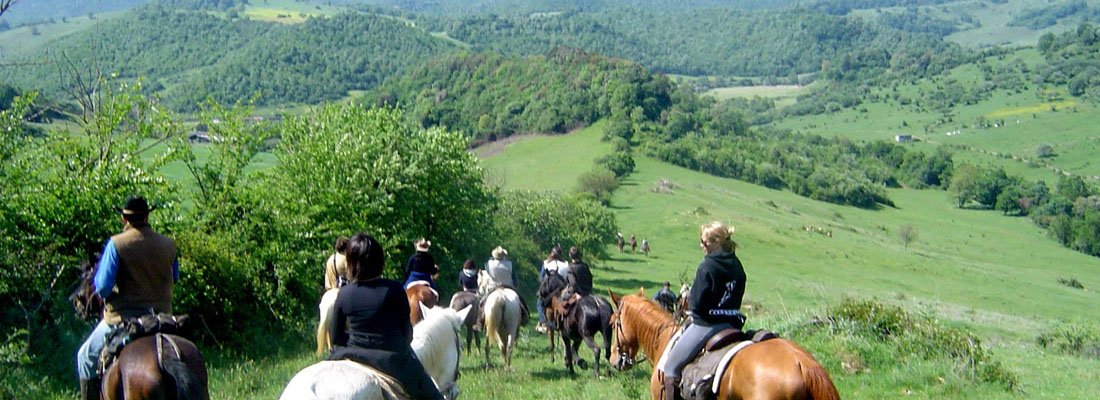
Nearby stables offer horse riding experiences for both experts and beginners. Depending on theyr
skills or preferences, guests can organize a tailor-made horse riding holiday by choosing between
traditional English-style riding, Western equitation or natural horsemanship. They can also opt for
individual riding lessons or guided rides into the country that suit their own personal skills and
stamina. The satbles are open all year round except Mondays.
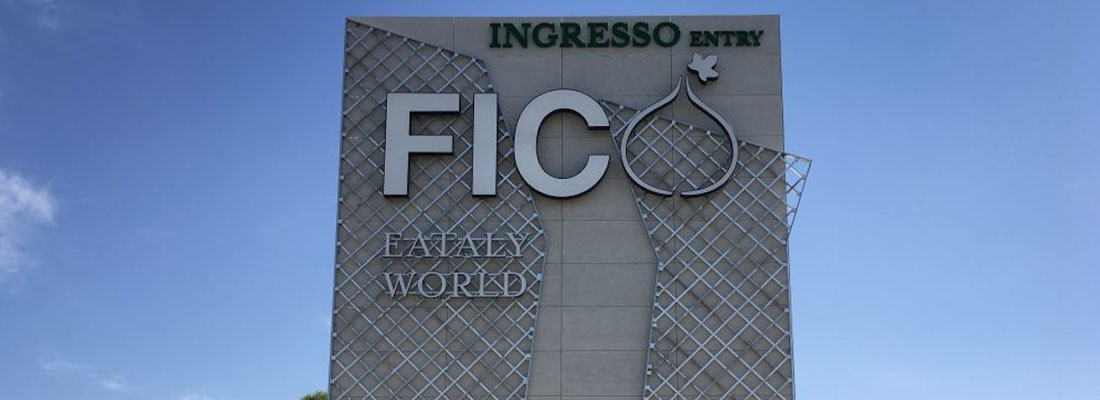
F.I.CO. Eataly World is the most largest agro-food park in the world, with an extension of 100,000
square meters accessible by foot or by bicycle. The structure, will be open from the 15th of
November 2017 in Bologna and includes fields houses and farms, 40 factories, dining areas,
classrooms and educational paths, markets, workshops and a congress center.
F.I.CO. (Italian Farmer Factory) is free admission and offers enthusiasts to students and
professionals the opportunity to learn more about the extraordinary Italian heritage of
biodiversity, knowledge and craft that revolves around food. It is not by chance that Bologna was
chosen as a symbol for the whole Emilia Romagna, the Italian enogastronomic excellence, with its
know-how of small and large companies recognized worldwide for quality and innovation.
Even in this case, Lodole Country House is in a strategic position, from here you can easily reach
F.I.CO. Eataly World, for a full immersion in the food industry, and also plan other occasions to
discover Tosco-Emilian Apennines food and wine treasures.
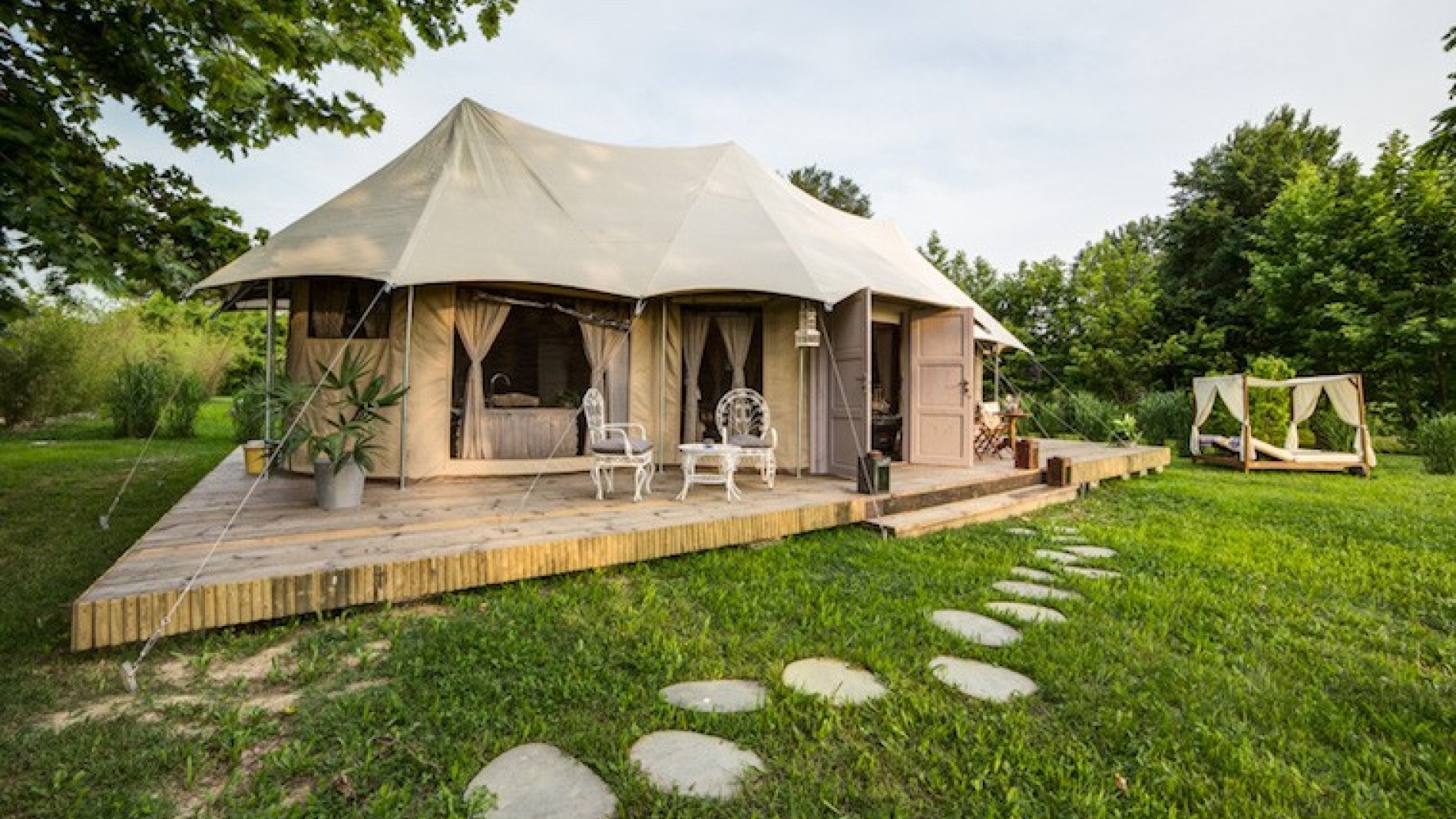
GLAMPING: EXTRA-LUXURY TENTS TO BE IN CONTACT WITH NATURE.
What happens when luxury accommodation meets nature? Glamping is born, a word born from the fusion between glamour and camping, which represents the new frontier of green and eco-sustainable tourism.
A lifestyle capable of captivating and conquering more and more people around the world.
Glamping is intended for those who want to experience an experiential holiday immersed in nature without having to give up comfort: a pre-furnished extra-luxury tent where you have the option of sleeping in a double bed, with a private bathroom and all the services you don’t have nothing to envy to a high level hotel.
Also in Lodole’s programs there is the opening of glamping structures to offer customers the opportunity to experience an alternative and unforgettable glamorous holiday.
Follow us, we will keep you updated on the developments of the project.
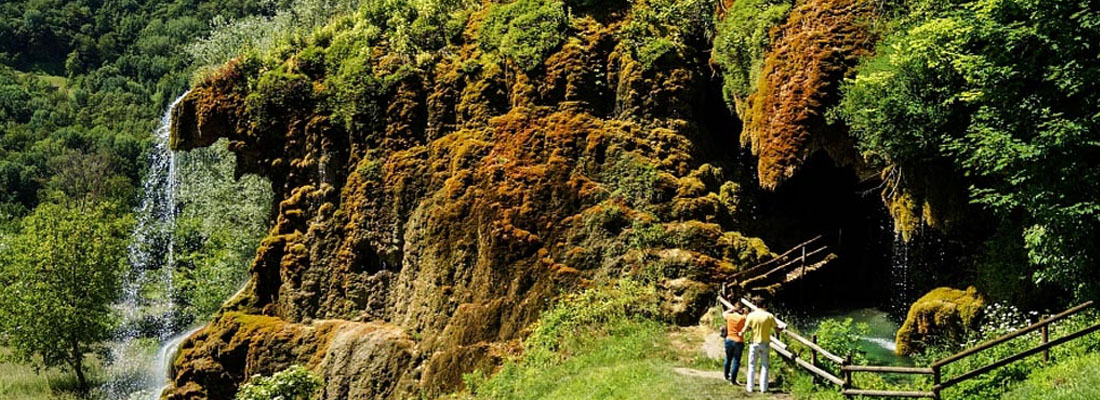
The Labante cave is a karstic phenomenon which is very important due to its rarity: it is in fact the
largest primary travertine cave in Italy and perhaps one of the largest in Europe. Above the cave
there is a natural waterfall fed by the spring that built up the deposit of calcareous rock which was
quarried by the Etruscans for the construction of the necropolis of Marzabotto. The cave is located
in a park with numerous hikes and mountain bike routes. The cave can be reached by following
the directions and the external structure can be seen easily from the road. The cave is free to visit
and is always open. How to get there: from Lodole Country House take the SP 38 road as far as
Rioveggio, then reach Grizzana Morandi and then Vergato. From Vergato take the SS 64 Porrettana
road South. After Vergato turn right on the SP 68 road towards Castel D’Aiano. Once in Labante
follow the directions to the Grotta.
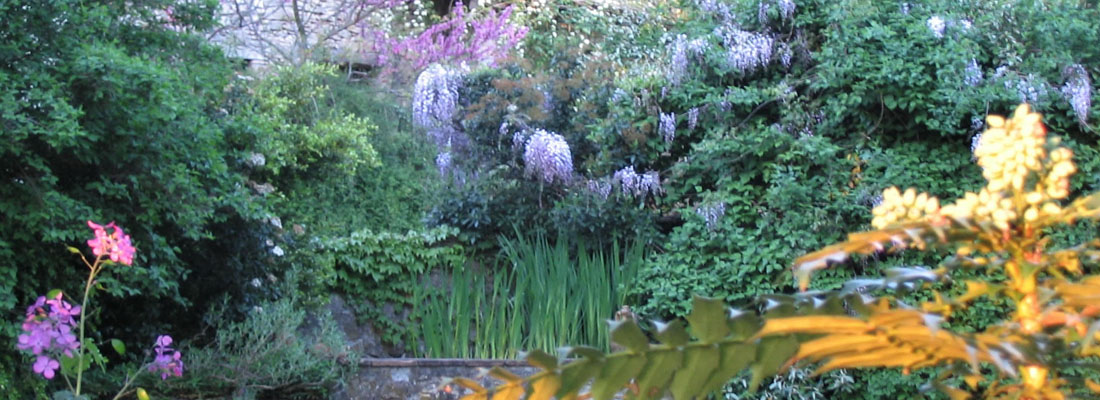
The Casoncello Gardens, located in Scascoli in the municipality of Loiano, are a beautiful
example of a natural garden, a harmonious marriage of nature and the human touch. The gardens
were created by Gabriella Bucciali without following any particular structure, apart from the
rotation of the seasons, in order to shape her idea of beauty. In spring the Garden are open to
the public and Gabriella organises visits to reveal the secrets that nature has created in her
splendid garden. Visitors from all over the world visit the gardens in this period.
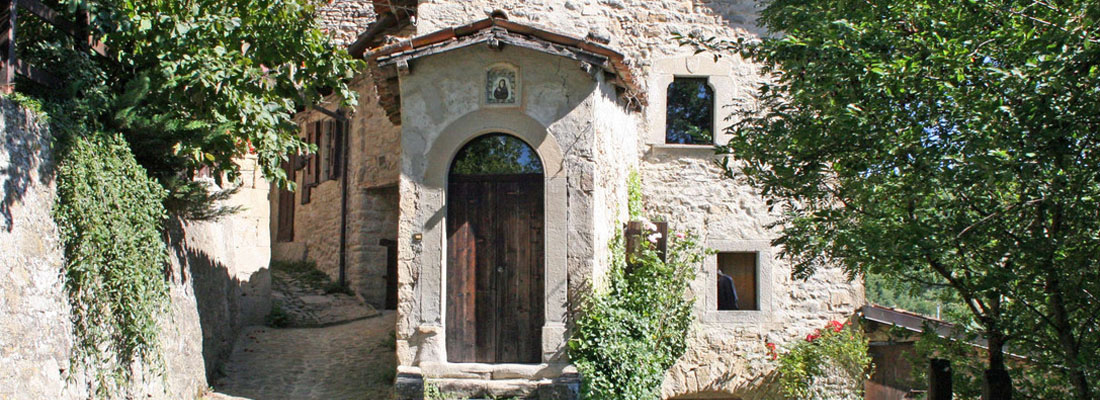 We recommend a unique route off the beaten track to immerse yourself in the nature and history
We recommend a unique route off the beaten track to immerse yourself in the nature and history
of the Bolognese Apennine. From Lodole reach the Reno Valley heading towards Rioveggio and
take the SS 64 Porrettana road south. After Vergato, at Ca’ Mezzini and just before the bridge on
the Reno, turn right and follow the directions for Vimignano. Then continue until Ca’ Viola and the
intersection with the SP 73 road. Continue towards Vimignano, as far as the La Scola hamlet in the
municipality of Grizzana Morandi, an area that shares the same name as the local painter Giorgio
Morandi. La Scola derives its name from the Lombard term Sculca, which means a lookout from a
high position. The hamlet’s defences were strengthened over the years with the construction of
walls and towers, as a final bulwark of defence. The most important building of the hamlet, Casa
Parisi (named after the family that owned the hamlet until the eighteenth century), which dates
from the second half of the fourteenth century, is a massive construction that follows the shape of
defence fortresses. The higher part of the hamlet still houses the Oratory of S.Rocco which, built
with blocks of sandstone, is the only example of this type of building left in the Bolognese
Apennine. Finally the lower part of the hamlet, full of valuable architectonic features (covered
loggias, windows and fireplaces with coats of arms, internal walls and covered walkways) is also
home to a cypress which is over a hundred years old and has been declared an arboreal
monument. From La Scola you can reach the Sanctuary of Montovolo. Once past Grizzana
Morandi and the Church of Campolo, the road rises to the summit of the hill, revealing wonderful
surprises: a beautiful panorama over the surrounding mountains of the Tuscan-Emilian Apennines
(the Corno alle Scale, Nuda and Monte Cimone mountains can be seen), the sanctuary, a sort of
lodge and a breath taking view of the Reno valley. Heading back towards Lodole Country House,
the road from Grizzana reaches Camugnano where, just south of Mount Vigese (Site of Community
Importance where birds of prey such as golden eagles nest) there is an enormous rock with the
Vigo church on top, which is quite spectacular when illuminated at night. To round off the trip in
fine style stop off at the Trattoria da Anna in Campolo, for a fantastic meal of typical dishes of the
Bolognese Apennine.
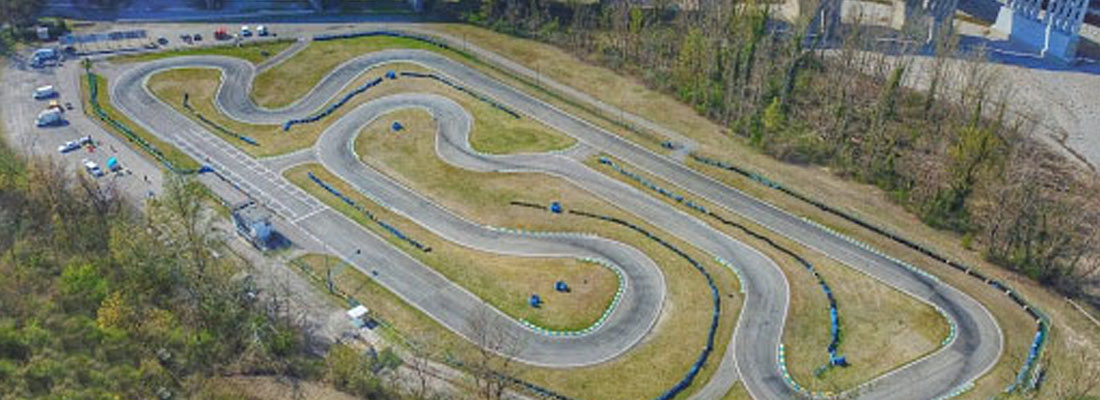
Karting Rioveggio is a go-kart track buried deep in the greenery of the Bolognese Apennines. This
part of the Emilia region is known as the Land of Engines, and the track is just a few minutes’ drive
from the Rioveggio exit on the A1 motorway. In addition to hosting regional competitions from
Emilia Romagna and Tuscany, the Italian Go-Karting Championships are also held here between
April and October. The track also hosts group race experiences and days out where go-karts can
be hired, as well as rally drive experiences where professional instructors teach safe and exciting
rally skills and help participants improve their driving techniques. Karting Rioveggio is ideal for
racing enthusiasts looking for thrills that combine adrenaline with superior safety standards to
guarantee a unique experience and a fun day out for everyone. Karting Rioveggio is just a short 10-
minute drive from Lodole Country House.
The track specifications are the following:
- Total area: 30,000 m²
- Length: 941 m
- Width: 8 m
- Driving direction: anticlockwise
- Number of bends: 11
- Chicanes: 1
- Race capacity: approved for 24 competitors on the starting line
- Trial capacity: approved for 48 competitors divided into two starting shifts
- Spectator capacity: 2.000
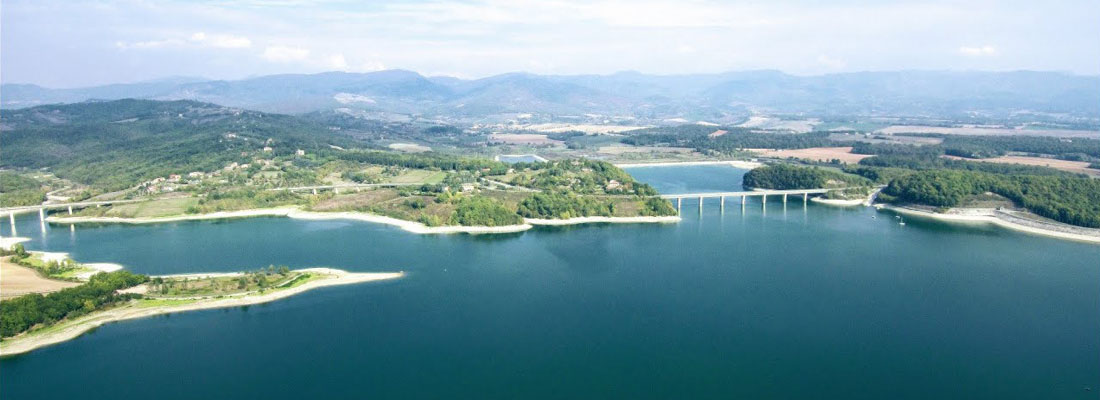
The idea of creating a dam on the Sieve river, in Bilancino on the Tuscan-Emilian Apennine, dates
from the end of the fifties, in order to prevent the flooding of the Arno and to fulfil the demands
for water from the nearby Florence. The idea started to become a reality only in 1978, years after
the famous Florence flood. Work began in 1984, after many variations that included areas with
recreational facilities, a hunting area and an area for water sports. The project, therefore, resulted
in a veritable lake. The Bilancino lake, which was opened to the public in 1999, covers an area of
about five square kilometres. It is one of Italy’s largest artificial reservoirs and is up to thirty one
metres deep. As well as the beaches, the area includes a naturalistic oasis managed by WWF and
many areas for hiking and mountain biking, as well as water sports such as canoeing, kayaking,
windsurfing and sailing. How to get there: from Rioveggio take the A1 motorway towards Florence,
and exit at Barberino di Mugello. After the tollbooth turn right at the first junction and right again
at the roundabout (2 km).
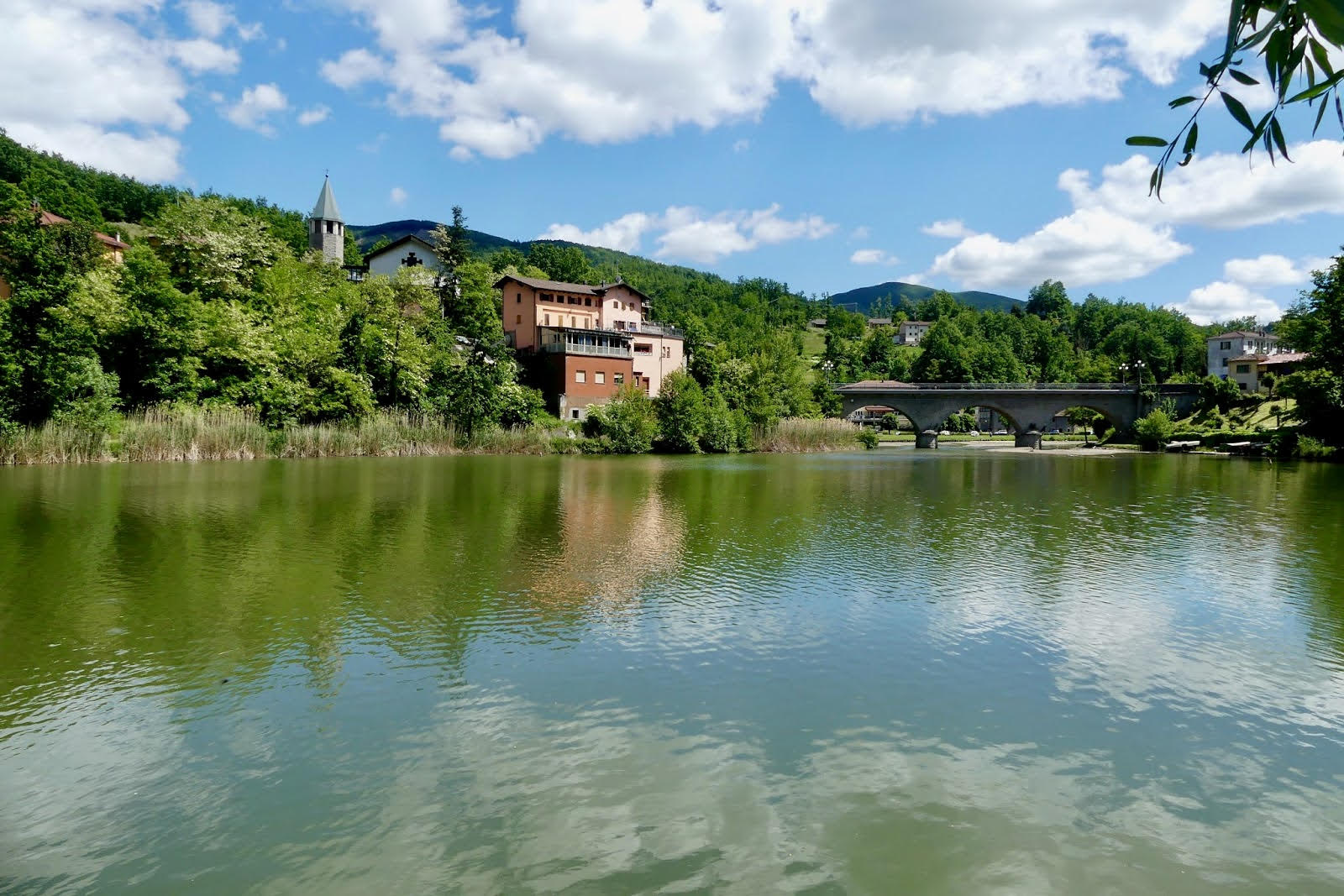
The Castel dell’Alpi lake is a natural reservoir formed in 1950 following a landslide that blocked the
course of the Savena river. The lake is located by Castel dell’Alpi, a small hamlet buried deep in the
lush greenery of the Tusco-Emilian Apennines in the municipality of San Benedetto Val di Sambro
and it is the only naturally formed reservoir in the entire province of Bologna. It name comes from
the ancient hamlet of Castel dell’Alpi that once stood on the left bank of the Savena river. Sadly the
hamlet was destroyed by the landslide, but the old church and belltower survived and can still be
seen today. Some years after the disaster, the village was rebuilt on the righthand bank of the lake
and this has since become a popular tourist resort, especially in the summer months. Beautiful
views can be enjoyed from the paths that run along the banks, and for the more adventurous,
rowing boats are available for hire. For fishing enthusiasts the lake is full of all kinds of fish,
including carp and trout that can be caught from either the bank or a boat. The lake is also a
paradise for trekking enthusiasts as numerous paths and nature trails start here and then
meander their way through chestnut woods and oak forests up to the nearby border with Tuscany.
From Lodole Country House the Castel dell’Alpi lake can be easily reached in about 15 minutes by
taking the Savena Valley Road in the direction of Monghidoro.
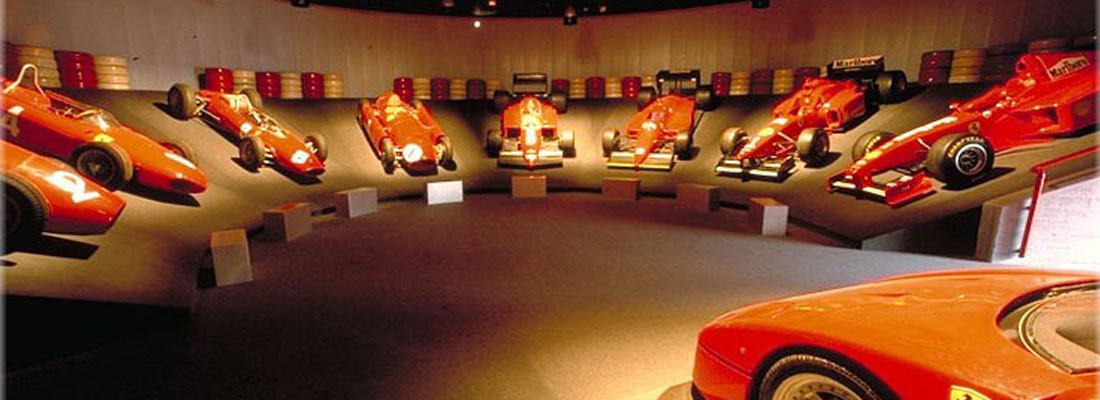
Emilia Romagna has always been famous as Italy’s motor valley. The nearby village of Loiano on
the SP 65 Futa provincial road is a stopover point in the classic Mille Miglia car rally held in midMay. Motoring enthusiasts can also enjoy the nearby Ducati (Bologna), Ferrari (Maranello),
Maserati (Modena) and Lamborghini (Sant’Agata Bolognese) museums, all of which are within easy
reach of the Lodole Country House thanks to the A1 motorway that connects Rioveggio with
Bologna and Modena. Close to Lodole Country House, about half an hour along the A1 motorway,
there is the Mugello racetrack. Out of the many sporting events held on the track, the most
famous is the Italian motorcycle Grand Prix, which is held every year, and is part of the Grand Prix
motorcycle racing season.
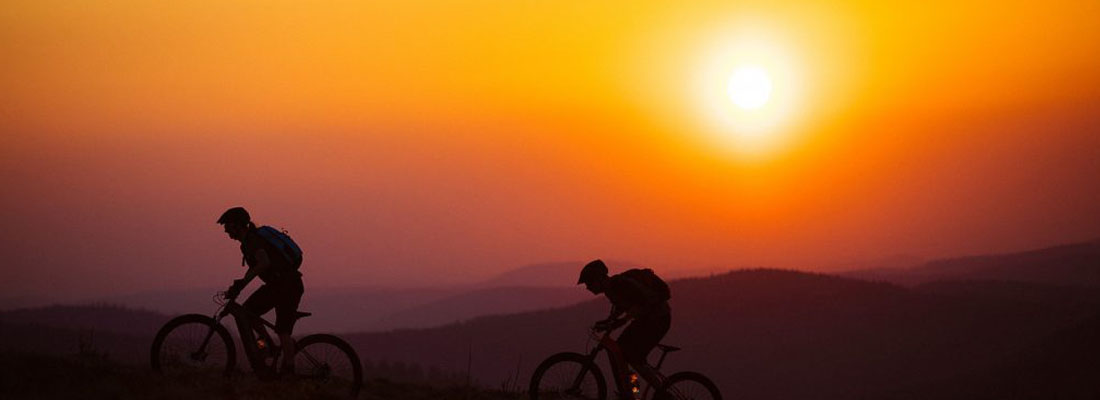
Lodole Country House provides both mountain bikes and road bikes free for its guests as well as a
host of information regarding biking in the Bologna Apennines. The Lodole Noticeboard contains a
selection of recommended trails and maps that will help guests discover all the natural beauty of
the Bologna hills.
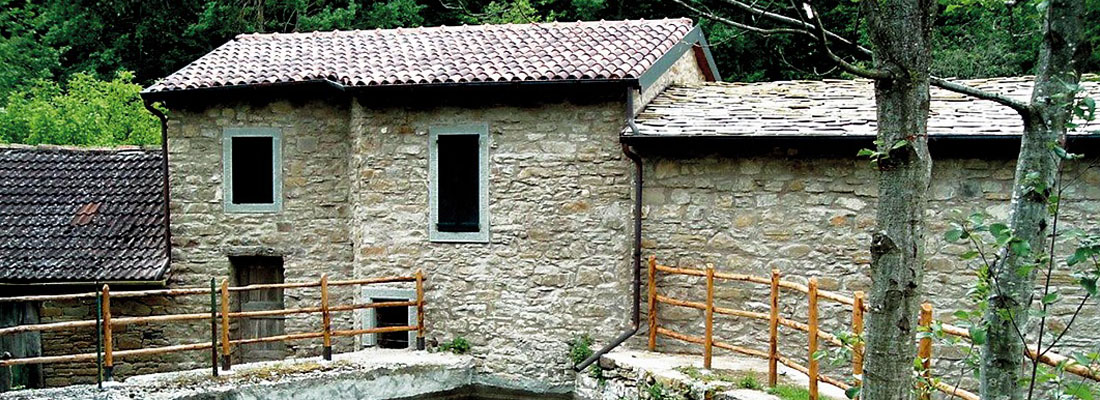
In the 1950s, along the so-called “Via dei Mulini” (Mill Way) in the municipalities of Loiano and
Monghidoro, there were no less than 36 mills, which used the power of the Savena river to grind
cereals and chestnuts into high quality flour. Near Lodole Country House, in addition to the
beautifully renovated “Molino del Pero” mill, which now houses the local golf club house, there is
also the “Mulino di Mazzone”, the only water mill in the area that is still in working condition. Built
in 1785, the interiors of the “Mazzone” mill are still exactly the same as they were when first built
and much of the grinding machinery is original too. The miller’s house is still there, as is the
stable, a wood-fired oven and a series of rooms containing the millstones for the different types of
cereal. The Mulino Mazzone currently belongs to the Sazzini family from Piamaggio, who are happy
to open it on Saturdays and Sundays if visitors first make a reservation.
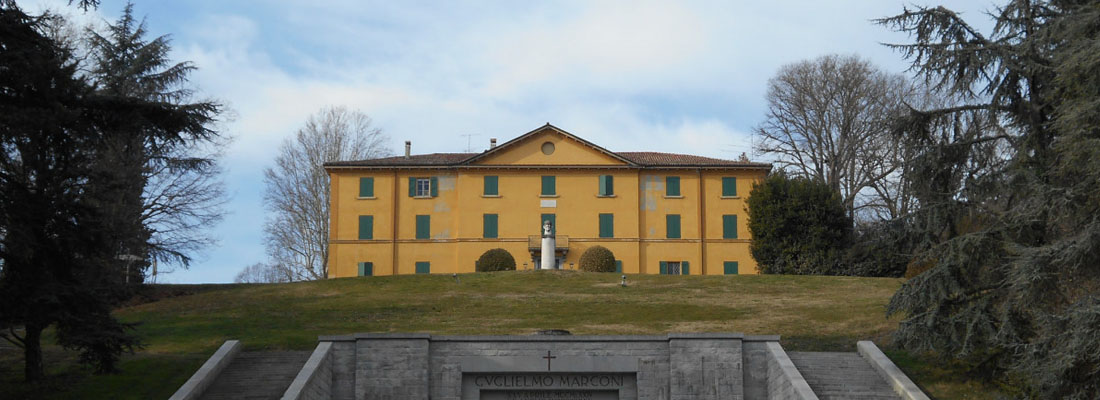
Dedicated to the Nobel Pysics scientist Guglielmo Marconi who revolutionized the history of
communications, the museum is located just 20 minutes from Lodole Country House. The
exhibition area includes a museum, a park and the mausoleum, at Grifone, Marconi residence of
the family. Here they were conducted the first experiments that led to radio and broadcasting, and
in fact marked the passing of the era of mass communication. The visitor can move between
environments and perfectly preserved tools and discover, thanks to multimedia and interactive
section, the training path of the great scientist and the stages of his activity as an inventor and
entrepreneur. Specific sections are also devoted to electricity, by L. Galvani and A. Volta, and the
important role of radio in the naval transportation. All this inside the fascinating context of the old
villa and its beautiful park.
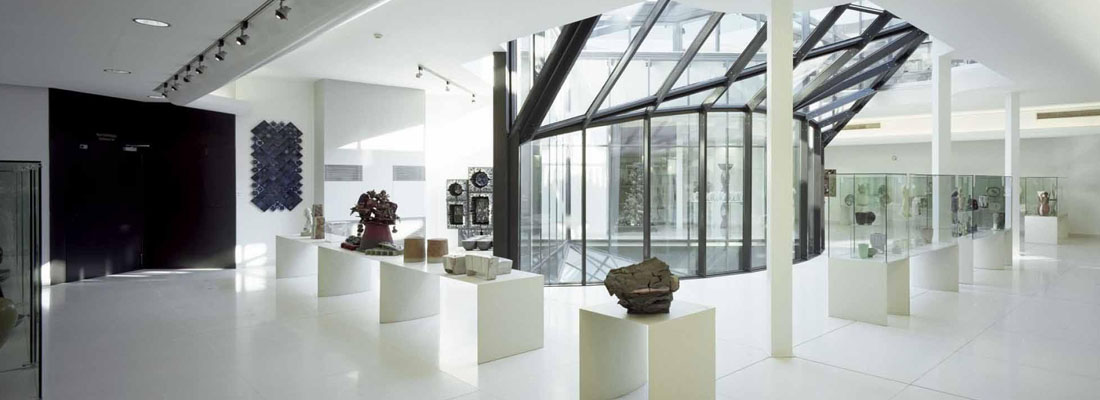
The International Museum of Ceramics in Faenza has one of the largest collections of famous
Majolica from Faenza and from allo over the world. The museum contains about 40,000 works in
ceramics of which 6,000 are display in the large exhibition space of 9,000 square meters. The
Museum was founded in September of 1908 to the conclusion of the great International
Exhibition, in that year the city of Faenza celebrated the tercentenary of the birth of the citizen
Evangelista Torricelli (inventor of the barometer), which hosted the products of many
manufacturers Italian and European. In 2000 (the year for the Culture of Peace), the museum has
been recognized as a “Monument for a culture of peace”, according to the UNESCO program.
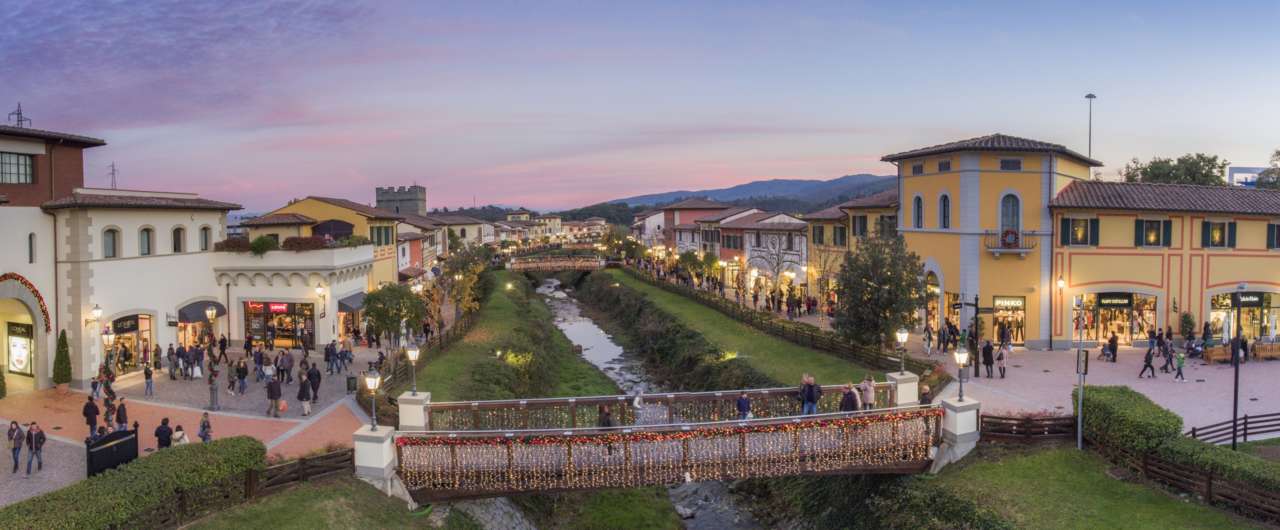
The Barberino Designer Outlet Village is located just a few kilometres outside Florence in the
splendid Mugello valley. As its name suggests, this Outlet Village is a unique shopping experience
consisting of over 100 outlets built in the form of a renaissance hamlet. Bright and picturesque,
the Village nestles snugly into the typical Tuscan countryside, tastefully offering visitors designer
name fashion and elegance at spectacular reductions of between 30 and 70%. In addition to its
many fashion stores, the Village also includes restaurants and snack bars where shoppers can
enjoy a pleasant rest. The Barberino Designer Outlet Village can be reached easily from Lodole
Country House in about 35 minutes by joining the A1 motorway at Rioveggio and then driving
towards Florence and turning off at the Barberino del Mugello exit.
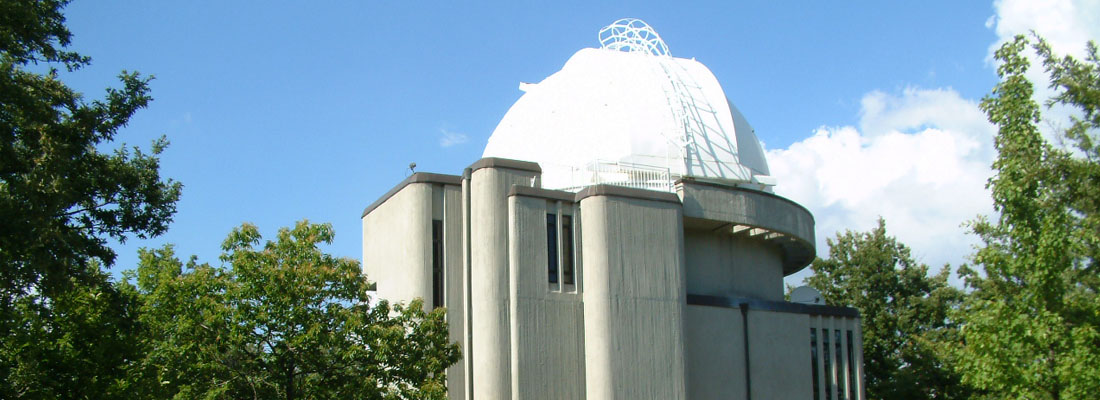
Loiano is home of the telescopes of the Bologna Astronomical Observatory of the National
Astrophysics Institute (INAF). The Zeiss telescope, with a mirror of 60 cm in diameter, was built in
the thirties and it was joined by the Cassini telescope, the second largest in Italy with a mirror of
152 cm in diameter, built in seventies. The Cassini is used for research, whilst the Zeiss is used for
teaching and is open to visitors – from April to October – for more than 50 evenings in order to
view the moon and the planets as well as, during this period, objects from the depths of space.
Observatory S.P. 65 of the Futa. 2 km after Loiano following the directions for Monghidoro
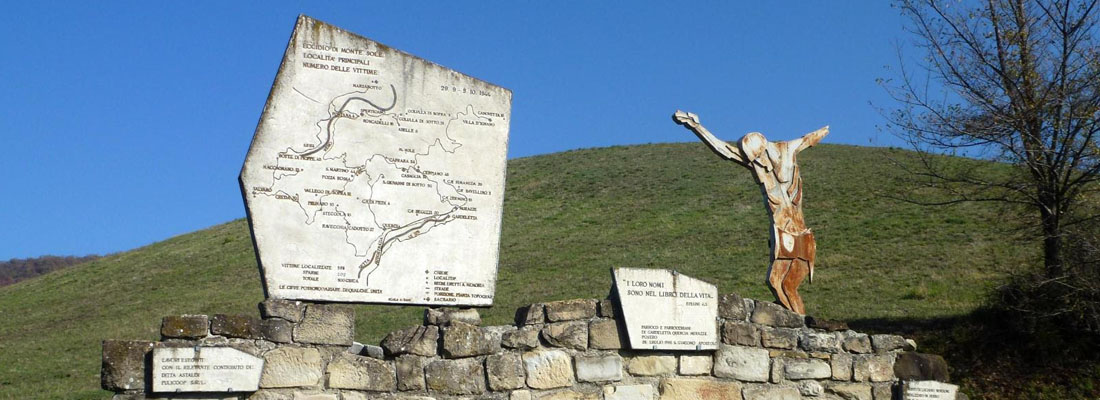
At the end of the 1980 the Emilia Romagna Regional Authorities officially named this stretch of
hills a Protected Area in order to preserve the memory of the events that took place here and to
launch a message of peace to raise awareness especially among young people and safeguard the
environmental heritage. The area stretches for over 6,000 hectares across the Bolognese
Apennines and through the municipalities of Marzabotto, Monzuno and Grizzana Morandi. The
Monte Sole Historical Park is situated on the site of the Marzabotto massacre that took place in
September 1944.
Monte Sole is the only historical park of its kind in Italy and it includes 5 fascinating trails:
· the Memorial trail is the most important as it passes through all the localities where the Nazi
massacres took place;
· for trekking, mountain bike and horseriding lovers, the nature trail is a splendid way to
discover the natural beauty of these hills;
· the Montovolo trail follows in the footsteps of the pilgrims who once walked through these
hills on their way to Rome or Florence;
· the Etruscan trail explores the ancient origins of this area by visiting sites like the Marzabotto
Archaeological Area, the first human settlement in these parts;
· last of all, is the fascinating Giorgio Morandi trail that shows how the famous Grizzana-born
artist was inspired by the places he lived in as a child and how he immortalised them in his
paintings.
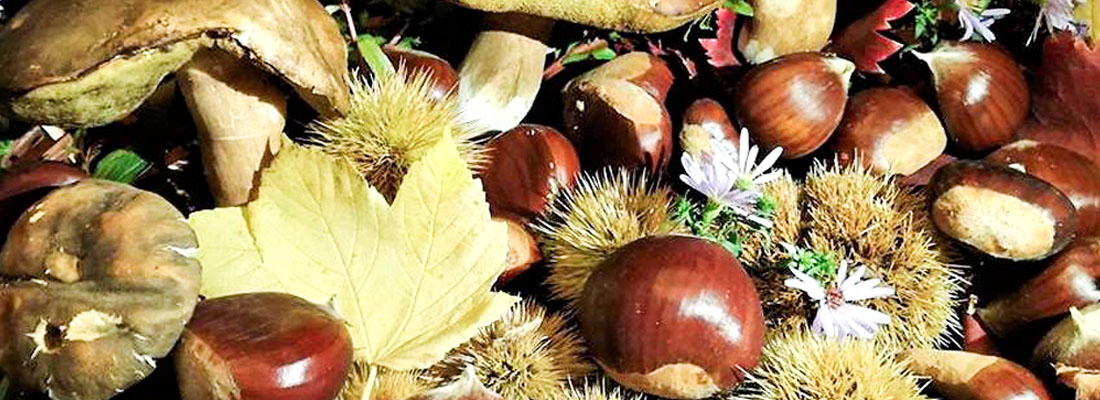
The woods that cover the Bolognese Apennines offer a wealth of natural treasures, such as
chestnuts, mushrooms, truffles and forest fruits. These local products are well-known all over
Europe and often boast special quality certification, like the Bolognese Apennine “Marrone
biondo” chestnut and the fresh or dried Granaglione chestnut. Of course, the most famous forest
product of all is the white truffle. Its exquisite, unparalleled fragrance graces numerous local
specialities, as do the various types of black truffle and the huge variety of wild mushrooms, such
as “porcini”, “galletti”, “ovoli” and “prugnoli”, that can all be found here. In the Autumn, Savigno,
which shares the title of Città del Tartufo (Town of the Truffle) with Castel di Casio and Camugnano
è Città del Tartufo, hosts the “Sagra del Tartufo Bianco Pregiato dei Colli Bolognesi” (the Bologna
Hills White Truffle Festival) with all its many gastronomic and cultural events. The numerous
Tartufeste or Truffle festivals that are held in October in various villages in the area are also
extremely popular.
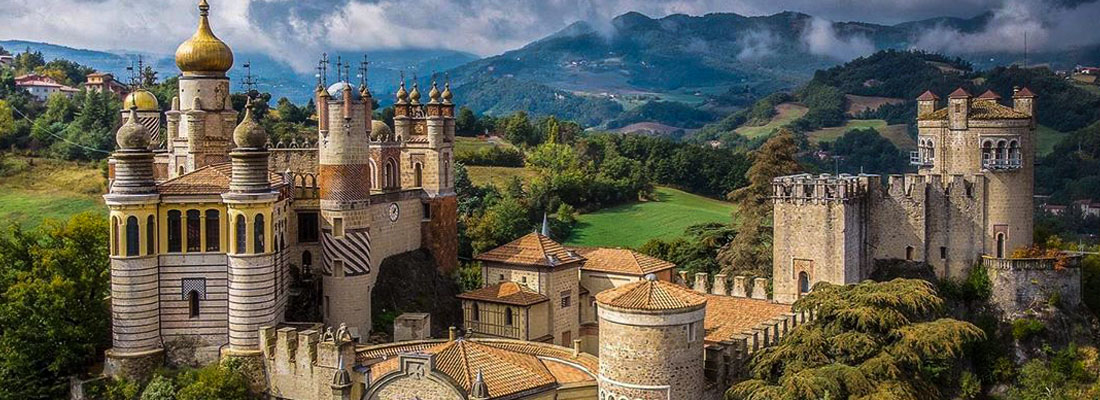
The Rocchetta Mattei is a castle of great charm located in the town of Grizzana Morandi, only 20
km from Lodole Country House and enchants the eyes of those who pass along the 64 statale
Porrettana roadroad. The fortress was built in the mid nineteenth century by Count Cesare Mattei,
who made it his residence and the center of elettromeopatica medicine. The peculiarity of the
castle, built in medieval and Moorish styles, features the Rocchetta Mattei according oriental
impression that stands out as unique in the Apennine environment. It has been use as an hotel
from the sixties until the late eighties and then was abandoned since 2005. In that year the
Rocchetta Mattei was owned by the Foundation of the Bologna Cassa di Risparmio. After a long
design study it began the restoration of the 2/3 of the total. Since August 2015, the partly restored,
is open to the public. For information call from Tuesday to Thursday 3:00 pm/6:00 pm tel. + 39 051916 845.
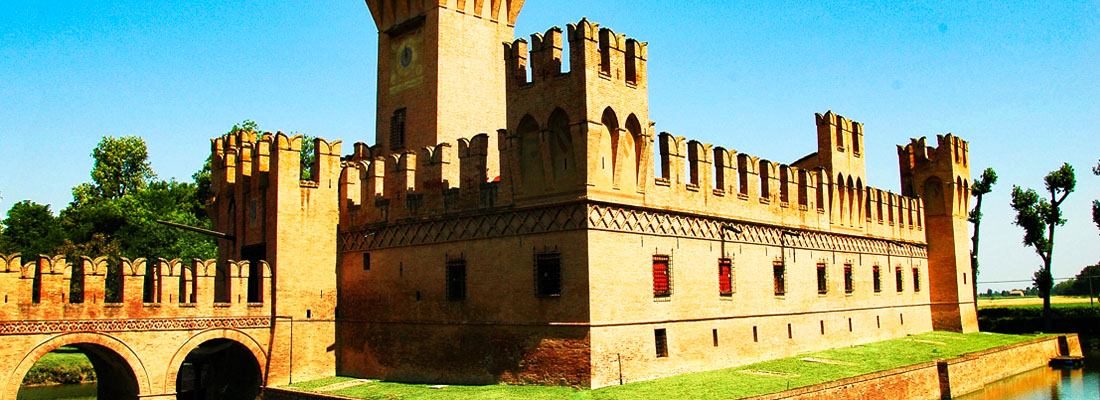
In the middle ages the area surrounding Bologna was dominated by noble and upper middle class
families seeking for power. To demonstrate their prestige and impose their authority on the local
landscape these families often built themselves lavish residences in the form of spectacular
castles. These castles stretch right across the Bologna Province and the most notable examples
(many of which are open to the public) are listed below.
ROCCHETTA MATTEI
The Rocchetta Mattei castle is an enchanting structure located near the village of Ponte in the
Municipality of Grizzana Morandi, just 20 km away from Lodole Country House. And anyone
driving up the Porrettana State Highway (SS64) through the splendid Bolognese Apennines cannot
fail to fall under its spell. The castle was built as a private residence and rest home in the mid 19C
by Count Cesare Mattei, the founder of Electro-Homeopathy. The fascinating architecture of the
structure combines medieval and Moorish styles that give the building a distinctive oriental feel
that contrasts spectacularly with the surrounding hills. In the 1960s the Rocchetta Mattei castle
was converted into a luxury hotel but in the 1980s it was abandoned and fell into neglect. The
building is now the property of the Fondazione della Cassa di Risparmio di Bologna who are
currently restoring it.
THE ROCCA DEI BENTIVOGLIO
Originally built as a defence against the barbarians over a thousand years ago, the Rocca dei
Bentivoglio castle still stands just 25 km from Bologna in the municipality of Bazzano overlooking
the splendid landscapes of the Bolognese Apennines. The current layout of the castle dates back
to the ascendancy of the Bentivoglio family who used the castle as a country residence. The castle
features a number of frescoed rooms decorated with crests and symbols representing the story of
this famous Bolognese family and is also home to the Municipal Media Library, an Archaeological
Museum and the Rocca dei Bentivoglio Foundation.
PALATA PEPOLI CASTLE
The Pepoli family originally built this castle with its central tower in 1500 as a hunting lodge and
country residence at the heart of the family’s lands. The castle is situated in the village of Palata
Pepoli, in the Municipality of Crevalcore, just 30 km outside Bologna. Today the castle is still private
property and the owners are currently helping with the restoration of the building.
THE SAN MARTINO CASTLE IN SOVERZANO
This castle complete with its military defences of moats, battlements and towers was built by
Cavaliere Manzoli in 1400 as an aristocratic residence and is surrounded by a vast park and
ancient woods. On the first Saturday and Sunday of October the park is home to an important
festival that has been held there since the 1500s. The San Martino Castle is located in the
countryside outside Soverzano, in the Municipality of Minerbio, just 18 km outside Bologna. The
castle is currently a private residence and can only be viewed from the outside.
THE ROCCA SFORZESCA CASTLE IN DOZZA
The ancient Rocca Sforzesca castle dates back to the middle ages and overlooks the characteristic
structure of a small hamlet that has remained unchanged over the centuries. Dozza is a
picturesque village located midway between Bologna and Imola, and is famous the world over for
both its splendid castle and “Biennale del Muro Dipinto” (Biennial Mural Festival). The original
castle was restructured in 1400 by Caterina Sforza who altered the military structure of the
fortress and turned it into a graceful aristocratic residence with a series of imposing rooms and
halls facing onto a majestic, central courtyard. Today the castle is home to the Emilia Romagna
Regional Wine Store, an association responsible for the promotion and protection of local wines
(free admission), and a Mural Documentation and Study Centre featuring some of the best work
from the artists who have taken part in the Biennial Mural Festival over the years (Guided tour
admission only, for more info: tel. 0542 678240).
THE GIOVANNINA CASTLE
The Giovannina Castle is a beautiful country residence built by the Bentivoglio family at the end of
the 1400s. Located in the village of San Matteo della Decima in the municipality of San Giovanni in
Persiceto, just 30 km from Bologna, the castle takes its name from the road in which it is situated.
Four classic, crenellated tours and typically medieval battlements give the house a majestic,
military air that is enhanced by the splendid park and ancient woods that surround it. Its interiors
include prestigious frescoes by Guercino and numerous priceless antiques that all contribute to
making this structure one of the most refined and picturesque castles in the whole province. The
Giovannina castle is privately owned and franchised to a catering company who use it for
important events such as weddings and conferences.
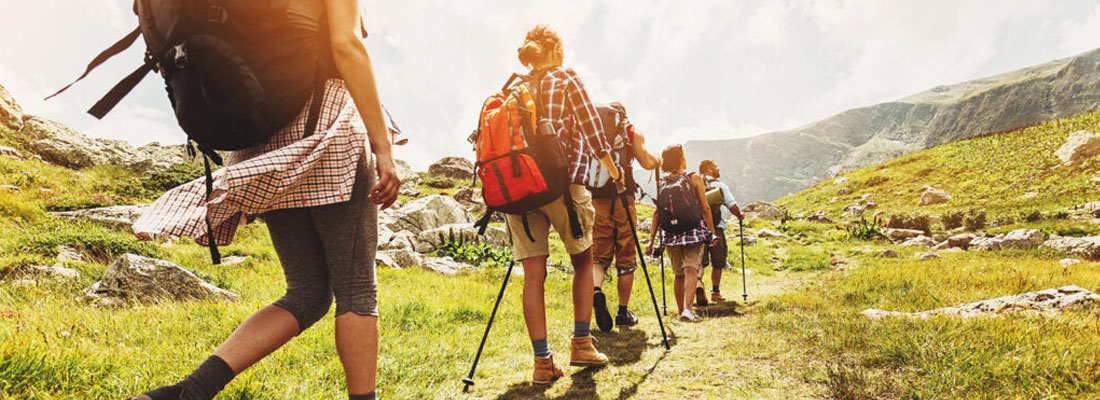
Lodole Country House is also perfectly located for trekking enthusiasts as there are a vast number
of nearby trails that wind over the paths and lanes of the Bologna Apennines. Maps and
guidebooks by the Italian Alpine Club are also available at the House to help guests choose the
ideal walk. We can particularly recommended a walk along the old Roman road, the Via Flaminia
Minor, or along the Via Francigena or the Via degli Dei. All these paths have joined Bologna to
Florence for thousands of years and today they are well signposted and described in travel and
guide books aimed at people who wish to relive the history and legends that surround these
picturesque pilgrim trails through the Tusco-Emilian Apennines.
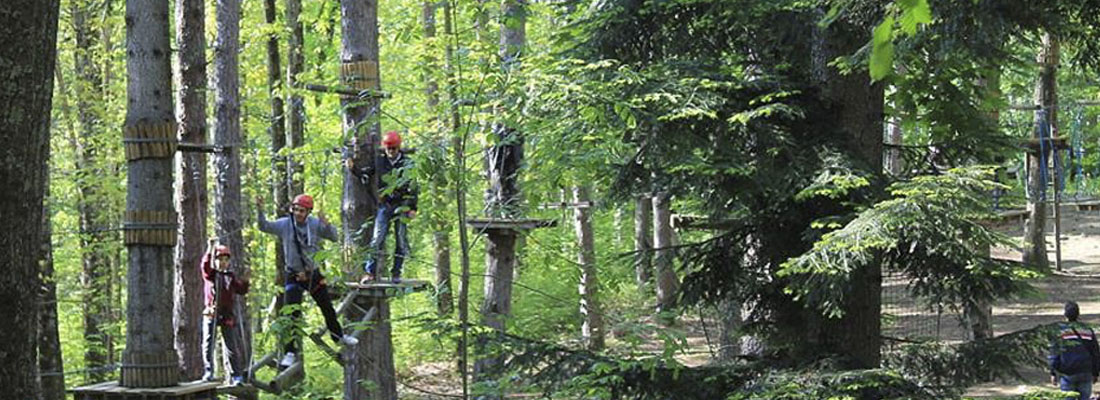
Triton’s Park is an acrobatic park immersed in the green of Monte Oggioli, at the Alpe of
Monghidoro. Located about 1,000 metres above sea level, the park features various structures
such as ropes, trapezes, net tunnels and fixed and mobile walkways. There are six routes, four for
adults and two for children, with varying levels of difficulty at a maximum height from the ground
of 7 metres. Triton’s Park has picnic areas with barbecues and a spectacular lake with various
specimens of tritons.
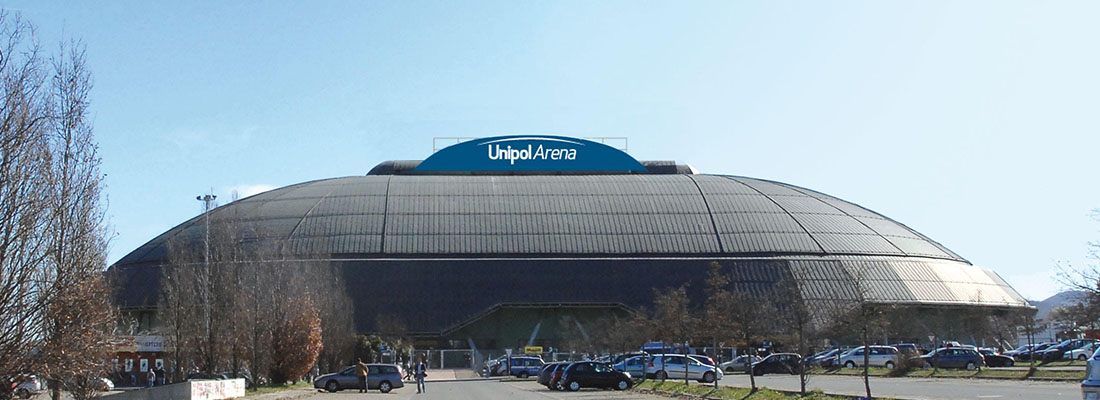
Unipol Arena is the largest Italian covered complex area and can take up to 20,000 people. At
Unipol Arena there are events, concerts, theatre performances with important Italian and
international artists as well as conventions, exhibitions, trade fairs, gala evenings and more. Lodole
Country House is just 30 minutes from Unipol Arena and easy to reach from the motorway A1
entering at Sasso Marconi and exiting at Casalecchio di Reno or taking the State Road 64.

